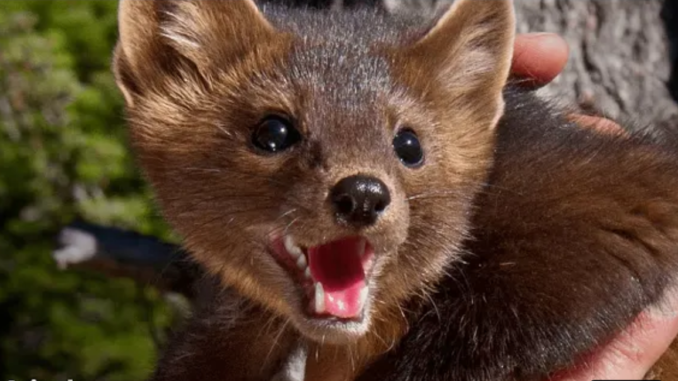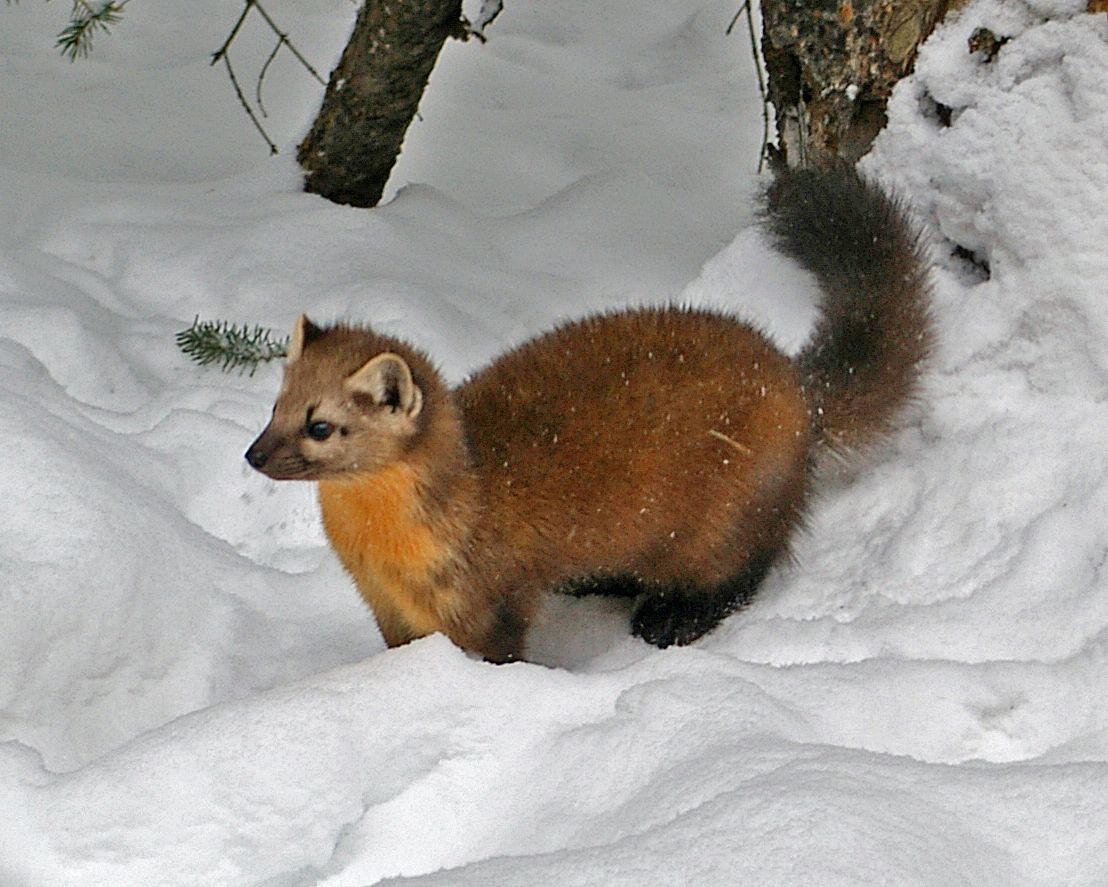
Let’s talk furry four-legged animals, because there just hasn’t been enough focus on them around here lately. Besides, they tend to be cute and what other qualities and attributes are we really interested in? Oh, yes, claws and teeth. Sharp teeth. The kind of teeth that carnivores show off when they’re hungry, or… angry. So far we’re looking at mammals and carnivores. Let’s add mustela, which is Latin for ‘weasel’, to our wish list which now looks like this list (get the gist?):
Kingdom: Animalia
Phylum: Chordata
Class: Mammalia
Order: Carnivora
Family: Mustelidae
The Mustelidae Family include badgers, ferrets, grisons, martens, minks, otters, polecats, weasels, and wolverines. Some of these critters make great pets, others – not so much. (Have you ever dealt with an angry wolverine?) In any case, we need to narrow down our focus a wee bit more, otherwise we’ll be here all night.
The genus Martes is comprised of several species of martens whose habitats are located primarily in the northern hemisphere, although at least one species is found south of the equator in Southeast Asia. Classified as carnivores, in reality they are omnivores because they will eat plant material occasionally. However, their preferred diet is meat and they hunt many different species of small animals. Martens may also become a meal for a larger predator, so basically they fall somewhere in the middle of the food chain. They are solitary creatures who live in underground burrows, usually among tree roots. Their homes are often found close to water. Typically nocturnal, they may at times be diurnal especially in the summer. Martens are excellent tree climbers.
One species of martens, Martes americana, lives primarily in Canada and Alaska, but with pockets in the Rocky Mountain states as far south as northern New Mexico, and in parts of the Cascade Range and California. They’re known by the common names American marten or American pine marten, or just pine marten. Domesticated animals can live up to 15 years, and wild pine martens have been known to live nearly that long. There are more than a dozen subspecies of M. americana.

Another species of martens is world famous, although their natural habitat is mostly limited to Siberia, Mongolia, and northern China. Martes zibellina is commonly known as sable. In captivity, the oldest documented sable lived 22 years on a fur farm. The oldest known wild sable lived 18 years.

Scientific Classification
Kingdom: Animalia
Phylum: Chordata
Class: Mammalia
Order: Carnivora
Family: Mustelidae
Subfamily: Guloninae
Genus: Martes
Species: M. americana, M. zibellina, others
“The legendary Siberian sable / Martes zibellina / Соболь. Green Video Wildlife” (7:31):
Question of the Night: Do you prefer dining out at your favorite restaurant, or dining at home with your favorite meal?
